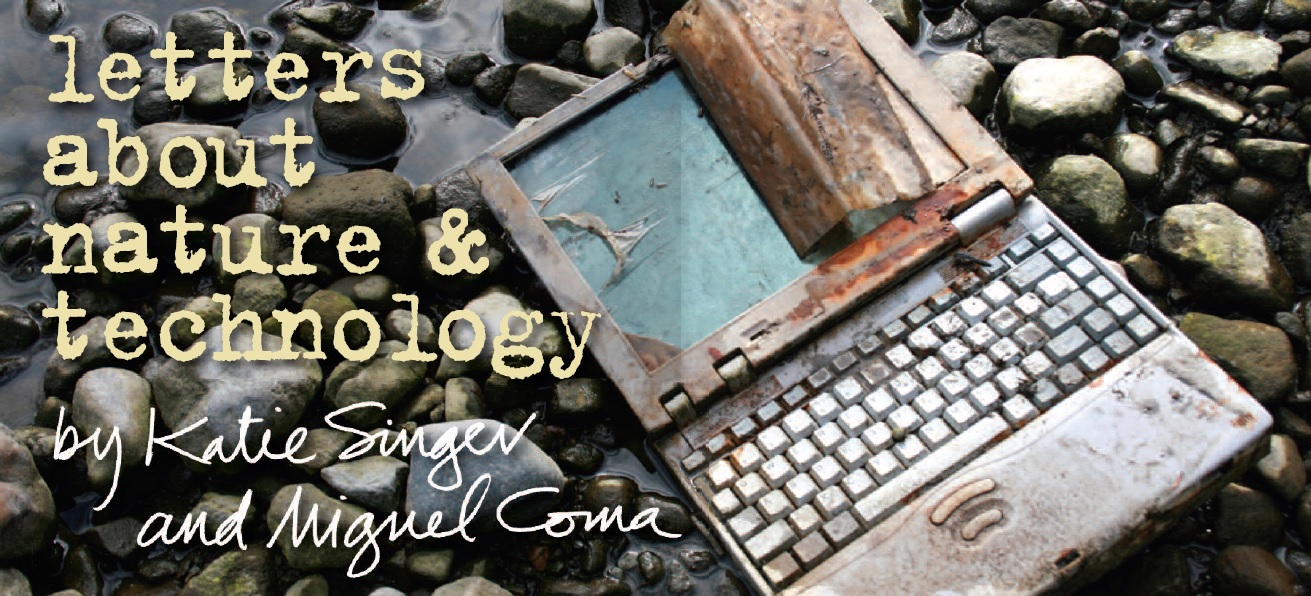Dreaming of a Visible Internet Footprint
originally published September, 2020
by Katie Singer
Google Translate
Swedish
French
After centuries of too many white people not seeing racism, smartphones’ cameras have made it undeniably visible. Without smartphones, we probably would not know about the murder of George Floyd. Without social media, plenty of international movements would never get off the ground.
I write this letter to everyone committed to reducing climate change and ecological harms. Without the Internet, I doubt that it would reach you.
Let me introduce myself. I am a white, U.S. American writer and grandmother. I live in New Mexico. In the house that my husband and I rent, I have a room for writing. We have food in our refrigerator, a vegetable garden, a computer, a telephone and a washing machine. I have my own car and several pairs of shoes. I consider myself privileged. Every day, I notice that these conveniences might not last. Two forest fires just started nearby, and so the air has become very smoky. I know people who have evacuated their homes.
In 1997, I learned Section 704 of the 1996 U.S. Telecommunications Act. It states that no environmental concern may interfere with the placement of a cellular antenna. (Here, “environmental” includes public health.) Numerous countries enacted similar laws, which essentially trump laws of nature. Learning about Section 704 got me wondering what’s behind our screens. I began researching technology’s impacts on wildlife and public health. I learned about the Internet’s energy use, greenhouse gas emissions, extraction demands, toxic waste and worker hazards. I am still learning. I am still wondering how to make the Internet’s footprint visible, and how to reduce it.
I believe that if we are not aware of our contribution to a problem, then we can’t be part of the solution. This applies to the Internet’s footprint.
In these letters, I will share what I’ve learned about the Internet’s footprint, name unanswered questions and potential solutions. I will report on the environmental impacts of manufacturing, operating and discarding or recycling electronic devices; the environmental impacts of manufacturing and discarding hybrid and electric vehicles; the environmental impacts of manufacturing and disposing of solar and wind powered systems. I will write about the energy demands and greenhouse gas emissions of 5G, the fifth generation of wireless infrastructure. I will co-author some letters with engineers who study these issues.
I dream that every Internet user will learn about the cradle-to-grave supply chain of one substance in their device. I will probably often repeat that every smartphone has 1000+ substances, each with its own energy-intensive, greenhouse gas emitting, toxic waste emitting supply chain. I dream that each of us will learn about the data storage centers in our neighborhoods, and the cellular sites within a mile of our home.
I have nothing to sell, no gizmo to endorse. I do want other Internet users to join me in finding ways to reduce our footprint. I admit that being alone with this information can make me crazy.
I am grateful to this website for posting this letter. I am grateful to everyone who learns about the Internet’s footprint and commits to reducing their part.
Let me say a bit more about the Internet, the largest thing that humanity has built. In order to tweet, text, make a video, stream a video, post on social media, research online, do a GPS search, purchase anything online, attend a Zoom meeting (do any online activity), you need three things: a device, internationally deployed access networks, and data storage.
Producing every device (tablet, smartphone, desktop, laptop, iWatch, etc.) starts with design (by energy-intensive robots) and extraction of ores. To “reduce” metals from their ores, the ores need smelting and/or refining.
Smelting and refining depend on CO2-emitting electric plants fueled by coal, fracked gas, nuclear power and/or hydro power. In most cases, renewables cannot power smelting or refining, since smelters need to be kept at 1800°F for six or seven years at a time.
Access networks provide cellular sites that receive and transmit signals between mobile devices. Access networks depend on electricity, batteries, fiber optic cables, antennas, satellites and cooling systems.
Data storage centers depend on computers and cooling systems (air conditioning and swamp coolers that use water and electricity).
Every item has a supply chain that depends on shipping between stations. Shipping depends on airports and airplanes, roadways and trucks, railways and trains, shipping lanes and ships.
Every electronic device and infrastructure part reaches the day when it is no longer usable. It becomes e-waste. Recycling electronics is worthwhile; and, of course, recycling also demands energy and generates toxins and greenhouse gases.
Indeed, each of the Internet’s energy-guzzling, toxic-waste and greenhouse-gas emitting operations depends on all of the others. They interconnect by power lines, natural gas pipe lines, cargo ships, telecom access networks and data storage centers to form one gigantic global super-factory.
I recognize that without Internet access, anyone’s educational, economic and social opportunities are extremely limited. I believe in universal access—so that the three billion people not yet online will have opportunities like you and I have. I also question how we can achieve universal access while simultaneously reducing energy use, greenhouse gas emissions, extraction of rare earths and other ores. Call this an unanswered question. Unless we discuss it, we won’t discover solutions.
Katie Singer writes about the energy, extractions, toxic waste and greenhouse gases involved in manufacturing computers, telecom infrastructure, electric vehicles and other electronic technologies. She believes that if she’s not aware that she’s part of the problem, then she can’t be part of the solution. She dreams that every smartphone user learns about the supply chain of one substance (of 1000+) in a smartphone. Her most recent book is An Electronic Silent Spring. She currently writes about nature, democracy and technology for Meer.com. Visit www.OurWeb.tech and www.ElectronicSilentSpring.com.
This article was originally published by Meer.com.
